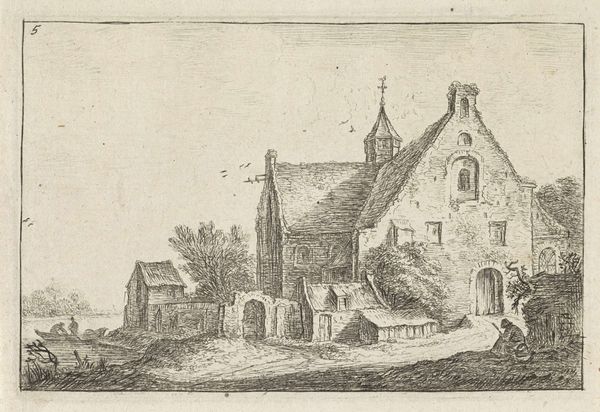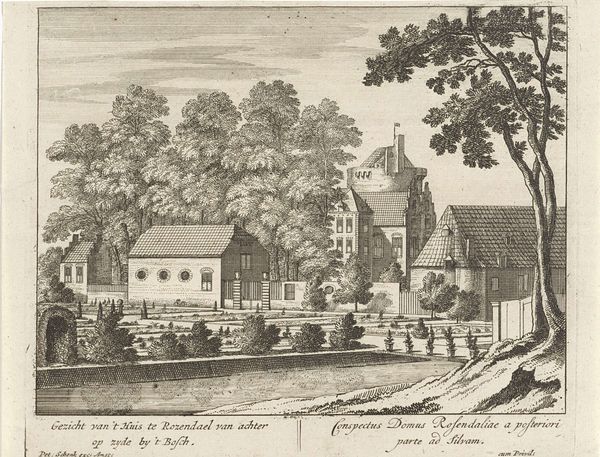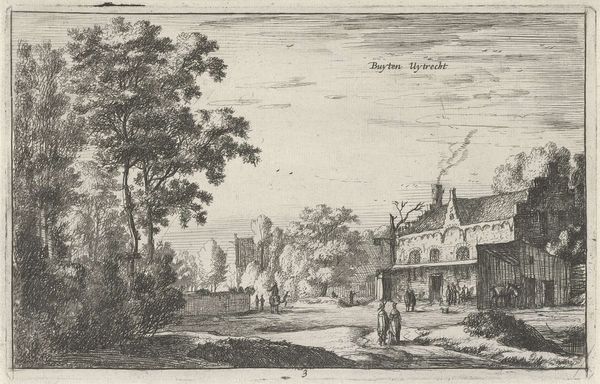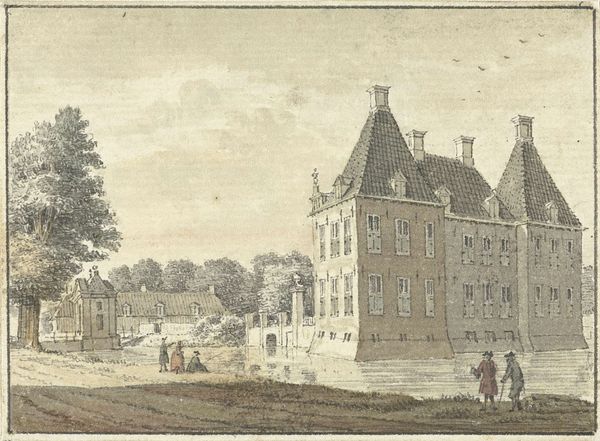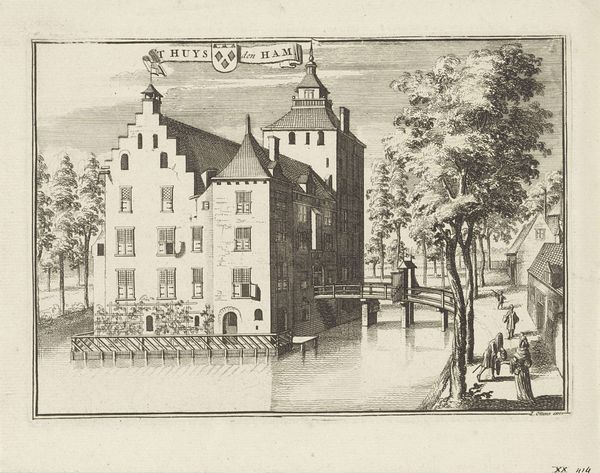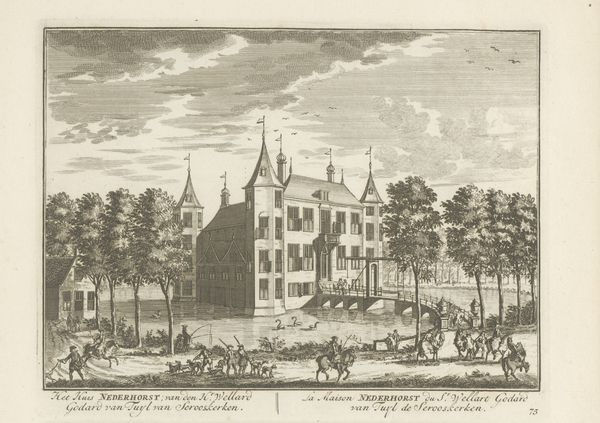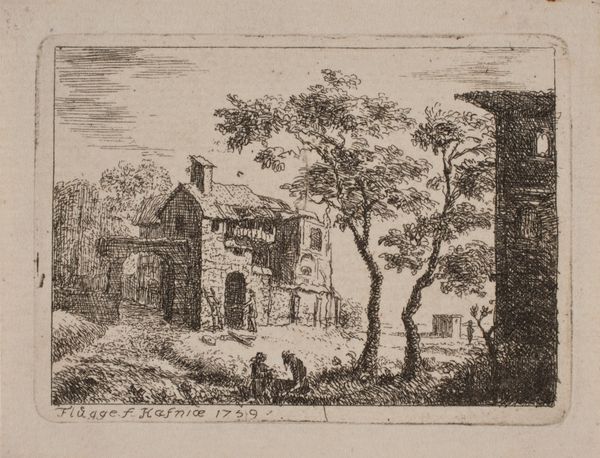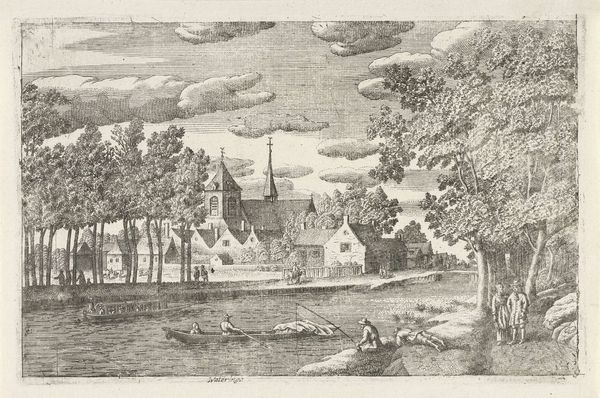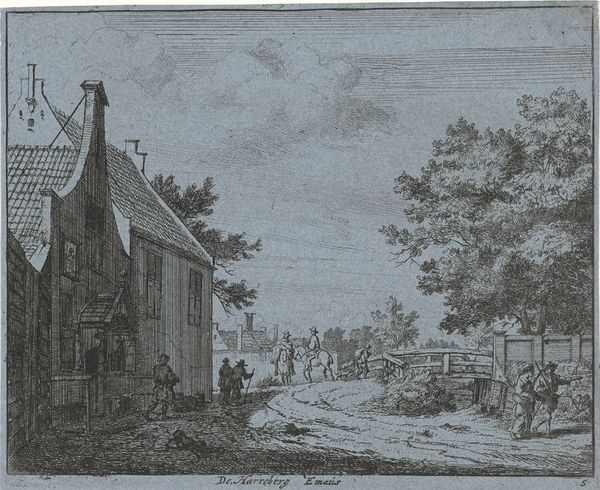
drawing, ink, engraving
#
drawing
#
aged paper
#
quirky sketch
#
pen sketch
#
pencil sketch
#
old engraving style
#
sketch book
#
landscape
#
personal sketchbook
#
ink
#
sketchwork
#
romanticism
#
pen-ink sketch
#
line
#
pen work
#
cityscape
#
engraving
Dimensions: height mm, width mm
Copyright: Rijks Museum: Open Domain
This landscape etching was created by Domenico Quaglio between the late 18th and early 19th century. Dominating the scene, we observe a grand building, perhaps a manor house, with a church spire rising in the background, symbols of temporal and spiritual power. Consider the staircase, a motif echoing through art history— from ancient ziggurats to Renaissance depictions of the Presentation of Jesus at the Temple. Stairs signify ascension, transition, and the journey from earthly to divine realms. Here, figures ascend, hinting at social mobility, spiritual seeking, or perhaps both. The inclusion of the church spire adds another layer. Vertical architectural elements have long been interpreted as axes mundi, connecting the human world to the celestial. This symbol predates Christianity, appearing in various cultures as obelisks or sacred trees. It embodies mankind's eternal desire to transcend earthly limitations. The past is never truly behind us. Instead, it resurfaces, transformed yet recognizable, in the visual language of each new age.
Comments
No comments
Be the first to comment and join the conversation on the ultimate creative platform.

